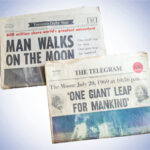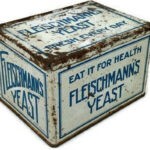There’s an engrossing history behind this unsophisticated all-type 1926 magazine advertisement for William Durant’s Star Cars

The Star Car tale begins…
A high school dropout founded General Motors in Flint, Michigan, on September 16, 1908.
William Durant, who made his fortune building horse-drawn carriages, spent $2,000 to incorporate General Motors, the company that would become the world’s biggest auto maker.
Durant wasn’t a newcomer to the fledgling world of automobiles; he was a major investor and general manager of Buick Motor Company. Buick then grew to become one of the best-selling automobiles in America.
Robert Samuel McLaughlin was one of the biggest shareholders in the new holding company that they named General Motors. He was the son of a carriage maker in Ontario Canada. He established the McLaughlin Motor Company in 1907 and, with engines from Durant’s Buick Motors, his company produced the McLaughlin-Buick.
Buick was the base on which General Motors would be built. Durant added Oldsmobile soon after incorporation and in 1909 he bought Cadillac.

Billy Durant,
Photo Credit: GM Heritage Center
Durant added more than 30 companies to the General Motors stable in those early days, including AC Spark Plug, Harrison Radiator and the Rapid and Reliance truck companies. He was determined to be the biggest and best in the automotive world.
Not all of his decisions were sound: He lost $12 million on a light bulb patent that turned out to be fraudulent!
GM became grossly overextended with so many imprudent acquisitions leaving the corporation with a cash shortage. On top of that, Durant made an $8‑million deal to buy Ford in 1909 but the bankers turned him down and
Durant was forced out of General Motors in 1910.
We’re getting to Star Cars. Please read on…
Durant returned to head GM in 1916
His path back to General Motors began in 1911 when he co-founded the Chevrolet Motor Company. It was a huge success, as the world knows. Durant parlayed that success—together with a stock buyback campaign with the McLaughlin and DuPont corporations, and with other Chevrolet stock holders—to regain control of GM.
As soon as he was back, William Durant started buying again. He brought Chevrolet in as a GM company in 1918. He also bought Delco, Fisher Body and Frigidaire, but lost millions on a failed tractor company.
But it would be Durant’s decision to launch a new line of cars – the Sheridan, to be manufactured in a new plant in Muncie, Indiana – that would be his undoing. The costs exceeded expectations.
The shaky financing and a recession also hit General Motors hard. DuPont’s chemical company rescued it,
but, in 1920, for the second and final time,
William Durant was out.
Undeterred, Durant bought the rights to the Sheridan
and to the Munchie automotive plant and,
in 1921, he established Durant Motors Inc.
Durant’s had several brands including the five-seater Star Car featured in the advertisement above. The Star would compete with Chevrolet and Ford’s Model T.
And the Sheridan? After the takeover, the enterprise began to degrade for Sheridan, despite a backlog of orders that went unfulfilled, and the Sheridan ceased to exist by September, 1921.
Like other products of the Durant Motors Company, the Star was an “assembled” car, built from parts supplied by various outside companies. The wheelbase was 102 inches and it had wooden wheels, ignition theft lock, demountable rims and a spare tire carrier.
Originally, Stars were powered by a four-cylinder engine; in 1926, the line introduced a six-cylinder engine. The advertisement above from 1926 sells both models. All factory-installed engines were built by Continental. A sun visor, rear vision mirror and a windshield wiper were available on the 6 cylinder model.
The company enjoyed success based upon Billy’s track record at General Motors, however, when sales failed to meet volumes sufficient to sustain Durant Motors holdings, the firm’s financial footing began to slip. As a result, Durant Motors began losing market share and dealers. The final models, produced under the Durant brand, rolled off the assembly line in 1931.
William Durant declared personal bankruptcy in 1936. His last venture was a bowling alley. He died in New York City on March 18, 1947, nearly broke at age 85.












